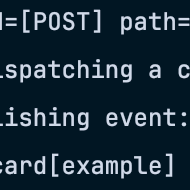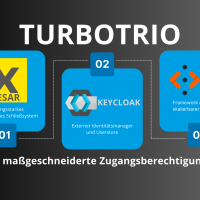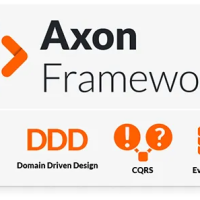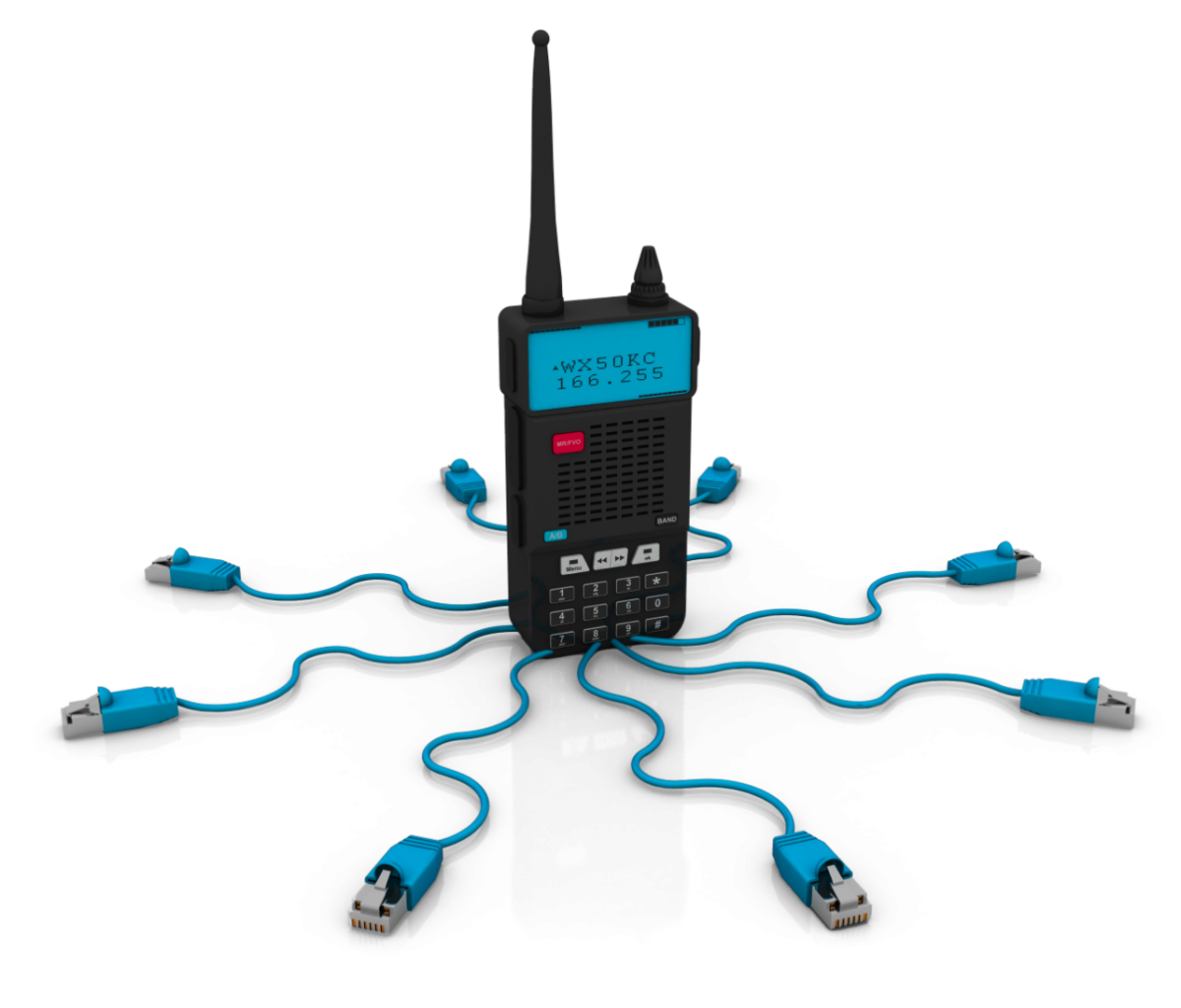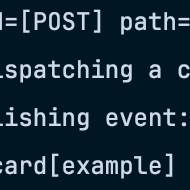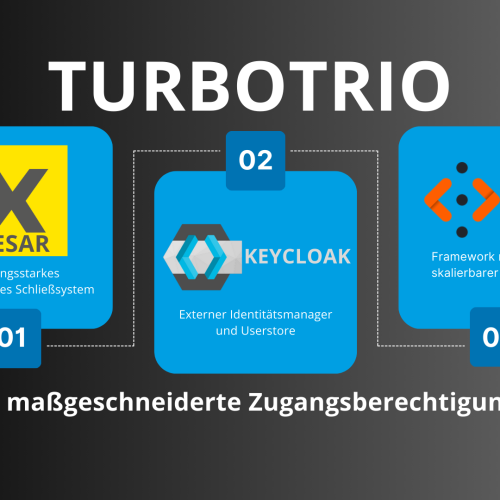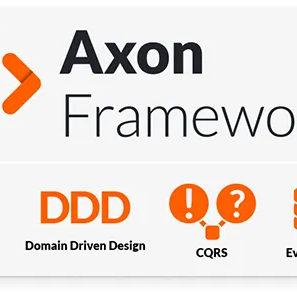Software development projects already tend to be complex endeavours, but doing them remotely increases complexity even further. Nevertheless, they are completely feasible with the right strategies in place. This article is a comprehensive guide on how to make your remote software development project successful.
How to start a project?
First, it’s crucial to have a clear and measurable project goal. If available, there should be an underlying company strategy that helps you to define that goal. Usually, that happens together with the stakeholders, who should be kept committed and engaged throughout the whole project.
The definition of a goal is usually heavily influenced by budget, schedule and requirements. At the start of a project, there can be the problem that a clear plan is needed, but no one is there to make it. So how to start?
Involving an architect as early as possible to define a rough architecture and technology stack should help. They can then do any initial assessment which then can be used to do the staffing accordingly.
This often results in delays that stakeholders may be reluctant to accept, but believe me, it’s worth the wait. More often than not projects start without a clear plan which then leads to much bigger delays later on because the whole architecture needs to change for example.
How to staff a project?
In a project it’s all about the people. So staffing is key to success for a project. Therefore, it is important to not only look for individuals with a sufficient level of skills and experience but especially that they can collaborate. Unfortunately, in most cases this is easier said than done.
For a realistic approach to staffing, you should ask yourself the following questions while keeping budget, schedule, and requirements in mind.
- Which roles are needed?
- Can I source all project members internally or do I need external support?
- If yes, where and how do I get external resources and what are the financial and legal implications?
- What can the ratio between senior and junior project members be?
- Which locations and time zones are reasonable when it comes to sourcing project members?
Depending on the project different roles might be needed and some of them only during certain project phases. The following list tries to give a comprehensive overview of those roles:
- Project manager
- Product owner: For insights on what makes a great product owner see our article: Mastering the Art of Product Ownership: A Personal Journey and Practical Insights
- Scrum master
- DeveloperArchitect
- Tester
- DevOps engineer
- Business analyst
- User for testing
Furthermore, teams can change due to other reasons, such as someone dropping out because of another project. This makes a team a dynamic structure that can change on regular basis. Factors like that should definitely be considered when defining the ways of communication and collaboration within a team.
How to communicate and collaborate?
Good communication is sharing relevant information with the right people at the right time. This sounds simple but is key for project success because it reduces misunderstandings, delays, and errors.
Sometimes minor things can make a huge difference here. Especially because there are no in-person coffee side chats in remote projects.
Example: A developer recognises that there is something odd with an endpoint while doing a code review. He or she then decides to share that finding with the rest of the team via a group chat. Another team member sees that message and replies that the whole API is actually deprecated. As the initial author of the code was not aware of that fact, a simple message saved valuable project time.
To establish such an environment, there is a simple set of guidelines that can be followed:
- Establish clear communication norms, including working hours and preferred communication channels to establish an environment of transparency.
- Have regular meetings as stand-ups to keep everyone aligned on progress and issues.
- Maintain thorough documentation to ensure that information is accessible to all team members, regardless of their location and seniority within the project.
- Be mindful of time zone differences and identify overlap hours when scheduling meetings or setting deadlines. Use tools like World Time Buddy to find suitable times for everyone.
Apart from guidelines for communication it’s crucial to agree on certain terms and practices when it comes to collaboration:
- Encourage asynchronous work where possible, allowing team members to contribute at times that suit them best.
- If possible, form cross-functional teams with members from different disciplines (e.g., development, QA, design) to encourage collaboration.
- Encourage pair programming sessions where developers work together remotely, which can enhance collaboration and knowledge sharing.
- Provide a thorough onboarding process for new remote team members to get them up to speed with tools, processes, and the culture.
- Encourage continuous learning and provide access to resources, courses, or training that help team members grow their skills.
- Utilise open virtual meeting rooms to enable team members to spontaneously meet for coffee side chats or activities like pair programming.
- Ensure that tasks are clearly assigned to specific team members with defined responsibilities and timelines to create a sense of ownership.
It can be difficult to establish a sense of togetherness in remote projects. Virtual team-building activities only tend to work for a short period before team members get bored and even annoyed. Although, they definitely help it’s better to organise in-person meetings every now and then, if possible.
How to utilise tools?
Infrastructure is key in any software development project and even more when it’s done completely remote. In general, infrastructure should adhere to the following principles:
- Use secure communication tools and ensure that data is encrypted and protected.
- Implement role-based access controls (RBAC) to restrict access to sensitive information.
- Ensure that the infrastructure adheres to relevant compliance requirements.
The technologies and tools used depend heavily on the project. As the topic of this article is to master remote software development projects infrastructure is addressed from that perspective.
The following table states domains that are especially crucial for communication and collaboration together with potential tools that can be used for each domain. In addition, at least one open and closed source alternative is stated per domain.
| Domain | Open Source | Closed Source |
| Chat | rocket chat | Microsoft Teams |
| Meetings | jitsi | Microsoft Teams or zoom |
| mailcow | Microsoft Outlook | |
| Wiki for documentation | wiki.js | slite or confluence |
| Project, requirements and ticket management | wekan | jira |
| Conception, user interface design & diagrams | draw.io | miro or figma |
| User testing | Easy Screenshot - a Web Clipper | usersnap |
Of course, there are many other domains that are relevant for software development projects such as the following:
- Code repository
- Version control
- Development environment
- Containerisation
- CI/CD
- QA and Testing
- DevOps
- etc.
How to manage requirements?
The goal should be broken down into smaller, manageable tasks with clear deliverables. This includes realistic estimations, definition of timelines and sufficient resource allocation.
Software development projects are usually done using agile frameworks such as Scrum or Kanban to manage tasks and sprints effectively. That is why there should be a focus on creating a minimum viable product (MVP) first and then using it as a basis for further development.
Regular reviews and retrospective are a valuable tool to get feedback from the team, stakeholders and users. This feedback can then be used to iterate and improve. It’s also important to derive action items that are assigned to project members to ensure feedback is actually followed up on.
Another invaluable tool to create the best possible software is testing. Insufficient testing, including limited test coverage, lack of automated testing, or inadequate quality assurance processes, can lead to the release of software with bugs and defects.
Involving actual users and conducting user testing as early as possible is also crucial for creating good software. The goal is for them to provide as much feedback as possible so that their actual needs can be met.
Nevertheless, one must be careful not to fall for The Perfectionism Paradox. Sometimes it’s even necessary to disagree with clients and stakeholders to protect the project's success.
How to deal with failure?
Failure is an integral part of project work and there are many reasons for software development projects to fail. The article Why Do Software Development Projects Fail? offers a comprehensive overview of that topic.
There will be always challenges that have not been anticipated beforehand which then can lead to failure. When that happens it’s more important how the failure is dealt with and mitigated in the future.
Dealing with failure requires clear communication, proper planning, stakeholder involvement, effective project management, willingness to iterate and a commitment to continuously improve.
Unfortunately, there are also factors that are hard to anticipate such as changes in market conditions, economic shifts, or unforeseen legal and regulatory issues. In the fast-paced IT industry, there are also rapid changes in technology, compatibility issues, or reliance on outdated tools and frameworks.
It's important to recognise the existence of these factors and to establish an environment where there is no negative perception of failure and change. Following all principles laid out in this article hopefully helps to exactly do that.


